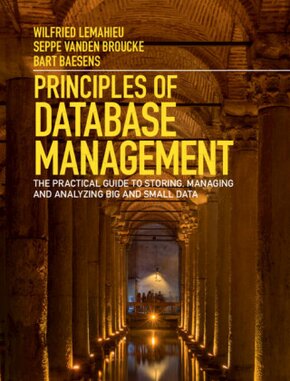
Principles of Database Management - The Practical Guide to Storing, Managing and Analyzing Big and Small Data
| Verlag | Cambridge University Press |
| Auflage | 2018 |
| Seiten | 808 |
| Format | 19,4 x 25,3 x 3,4 cm |
| Gewicht | 1910 g |
| Artikeltyp | Englisches Buch |
| EAN | 9781107186125 |
| Bestell-Nr | 10718612UA |
Introductory, theory-practice balanced text teaching the fundamentals of databases to advanced undergraduates or graduate students in information systems or computer science.
Klappentext:
This comprehensive textbook teaches the fundamentals of database design, modeling, systems, data storage, and the evolving world of data warehousing, governance and more. Written by experienced educators and experts in big data, analytics, data quality, and data integration, it provides an up-to-date approach to database management. This full-color, illustrated text has a balanced theory-practice focus, covering essential topics, from established database technologies to recent trends, like Big Data, NoSQL, and more. Fundamental concepts are supported by real-world examples, query and code walkthroughs, and figures, making it perfect for introductory courses for advanced undergraduates and graduate students in information systems or computer science. These examples are further supported by an online playground with multiple learning environments, including MySQL, MongoDB, Neo4j Cypher, and tree structure visualization. This combined learning approach connects key concepts througho ut the text to the important, practical tools to get started in database management.
Inhaltsverzeichnis:
Preface; Part I. Databases and Database Design: 1. Fundamental concepts of database management; 2. Architecture and categorization of DBMSs; 3. Conceptual data modeling using the (E)ER model and UML class diagram; 4. Organizational aspects of data management; Part II. Types of Database Systems: 5. Legacy databases; 6. Relational databases: the relational model; 7. Relational databases: structured query language (SQL); 8. Object oriented databases and object persistence; 9. Extended relational databases; 10. XML databases; 11. NoSQL databases; Part III. Physical Data Storage, Transaction Management, and Database Access: 12. Physical file organization and indexing; 13. Physical database organization; 14. Basics of transaction management; 15. Accessing databases and database APIs; 16. Data distribution and distributed transaction management; Part IV. Data Warehousing, Data Governance and (Big) Data Analytics: 17. Data warehousing and business intelligence; 18. Data integration, data quality and data governance; 19. Big data; 20. Analytics; Appendix A. Cases and questions; Appendix B. Using the online environment; Appendix C. Answer key to select review questions; Glossary; Index.
